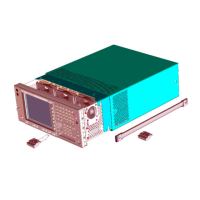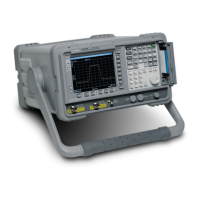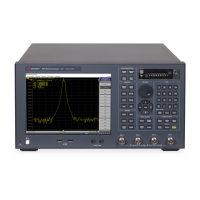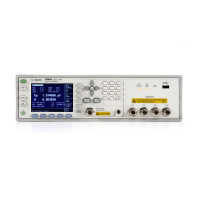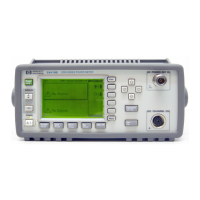80 Chapter 2
Programming Fundamentals
Improving Measurement Speed
<Freq_middle>;PFER? <Freq_top> This single transaction initiates
three different phase and frequency error measurements at each of
the three different frequencies provided and returns the data. Then
you read the three sets of data.
Consider using USB or LAN instead of GPIB
USB and LAN allow faster data input and output. This is especially
important if you are moving large blocks of data. You will not get this
improved throughput using LAN if there is excessive LAN traffic (that
is, your test instrument is connected to a very busy enterprise LAN).
You may want to use a private LAN that is only for your test system.
Minimize DUT/instrument setup changes
• Some instrument setup parameters are common to multiple
measurements. You should look at your measurement process with
an eye toward minimizing setup changes. If your test process
involves nested loops, make sure that the inner-most loop is the
fastest. Also, check if the loops could be nested in a different order to
reduce the number of parameter changes as you step through the
test.
• Are you are using the measurements under the
Meas key?
Remember that if you have already set your Meas Setup parameters
for a measurement, and you want to make another one of these
measurements later, use READ:<meas>?. The MEASure:<meas>?.
command resets all the settings to the defaults, while READ changes
back to that measurement without changing the setup parameters
from the previous use.
• Are you are using the Measurements under the
Meas key?
Remember that Mode Setup parameters remain constant across all
the measurements in that mode (e.g. center/channel frequency,
amplitude, radio standard, input selection, trigger setup). You don’t
have to re-initialize them each time you change to a different
measurement.
Avoid unnecessary use of *RST
Remember that while *RST does not change the current Mode, it
presets all the measurements and settings to their factory defaults.
This forces you to reset your analyzer’s measurement settings even if
they use similar mode setup or measurement settings. See Minimize
DUT/instrument setup changes below. (Also note that *RST may put
the instrument in single measurement/sweep for some modes.)
Avoid automatic attenuator setting
Many of the one-button measurements use an internal process for

